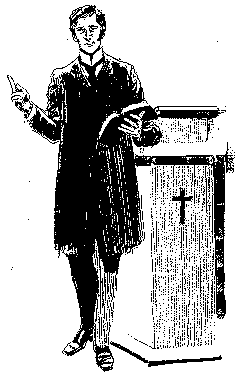The Rest of the Story (Ben Hur)
 If you were born after
1950, you might not know the story of Ben Hur. This classic book
written by a Civil War general, Lew Wallace, in 1899, was turned into a movie
starring Charleton Heston, which won the Academy Award for best movie in 1959.
It is a towering story of love, of suffering, of the struggle of good against
evil, and finally of triumph. Judah Ben Hur, the storyís hero, grows up with
his boyhood friend, Marsalla. They are ancient, Mideastern Tom Sawyer and Huck
Finn. Judah is, of course, a Jew, and Marsalla, a Gentile. Judah is the heir
of a very great and wealthy house in Jerusalem. Marsalla is a promising
military man who trained in Rome as a soldier, then returned to Jerusalem as
the leader of the Roman occupation forces.
If you were born after
1950, you might not know the story of Ben Hur. This classic book
written by a Civil War general, Lew Wallace, in 1899, was turned into a movie
starring Charleton Heston, which won the Academy Award for best movie in 1959.
It is a towering story of love, of suffering, of the struggle of good against
evil, and finally of triumph. Judah Ben Hur, the storyís hero, grows up with
his boyhood friend, Marsalla. They are ancient, Mideastern Tom Sawyer and Huck
Finn. Judah is, of course, a Jew, and Marsalla, a Gentile. Judah is the heir
of a very great and wealthy house in Jerusalem. Marsalla is a promising
military man who trained in Rome as a soldier, then returned to Jerusalem as
the leader of the Roman occupation forces.
During a parade, a tile falls from the roof of Judah Ben Hurís house and strikes the new Roman rule. Judah is falsely arrested and sent to row as a slave in a Roman military ship. Marsalla knew it was an accident and could have prevented Judahís arrest, but because of his lust for power, didnít. In addition, Judahís mother and sister are imprisoned in Jerusalem.
Judah hates Marsalla, and while in the belly of the military ship, providing the power for naval warfare, he vows that he will live, return to Jerusalem and free his mother and sister. Slaves in such ships rarely lived for more than a year. Judah had been rowing for three years when, in the heat of a naval battle, his ship was sunk. He saved the commander of the ship, and as a reward, was given his freedom and adopted by the commander, who was the top naval officer in the Roman navy, a very powerful and wealthy man.
He returns to Jerusalem with all the wealth and power of his new identity, and confronts the astonished Marsalla, who assumed he had been dead for years. Ben Hur demanded that Marsalla find and release from prison his mother and sister. Marsalla finds them in prison, but they have leprosy, so he whisks them away to the leper colony outside Jerusalem to live out a pitiful existence. Ben Hur is told that they are dead. His hate for Marsalla grows, and in a chariot race in which Marsalla and Judah Ben Hur are the primary figures, Marsalla is killed. With his dying breath, Marsalla, out of spite, tells Judah the truth about his mother and sister.
Judahís hate now no longer has an object to focus on. He generalizes his hatred and becomes a bitter shell of his former self. Finally, in desperation he goes to the leper colony to get his mother and sister to take them to Jesus, this great preacher who has been performing miracles. When they get to Jerusalem where they think they will find Him, they discover that He has just been crucified. Now, all hope is gone, and despair settles over them. However, in the hours and earthquakes rocked the city, Judahís mother and sister are healed of the leprosy, and Judahís heart, along with his motherís and sisterís, is turned to Jesus. Their faith, their health and their lives are restored.
It is a towering story, deeply moving, and an exquisite portrayal of the power, grace and love of Jesus. Why did I tell you about Ben Hur? Because of this interesting twist. As Paul Harvey would say, this is ďthe rest of the story.Ē When Lew Wallace set out to study the life of Christ, he was not a Christian. In fact, writing a story such as Ben Hur was the farthest thing from his mind. Wallace was antagonistic toward Christianity, and determined he would study the life of Christ so thoroughly, and then write so convincingly, that he would be able to kill the story of Christ. He wanted to prove that Jesus, if He had lived, was not God, but merely a man, that He never rose from the dead, and that Christianity was a hoax.
So he studied. This great and enormous subject drew him further and further into his research until the evidence overwhelmed him. He dropped to his knees and cried out to Jesus to be his Savior and Lord. Then, instead of writing a book to prove to the world that Jesus was not God, he wrote Ben Hur, to try to prove to the world that Jesus was God.
